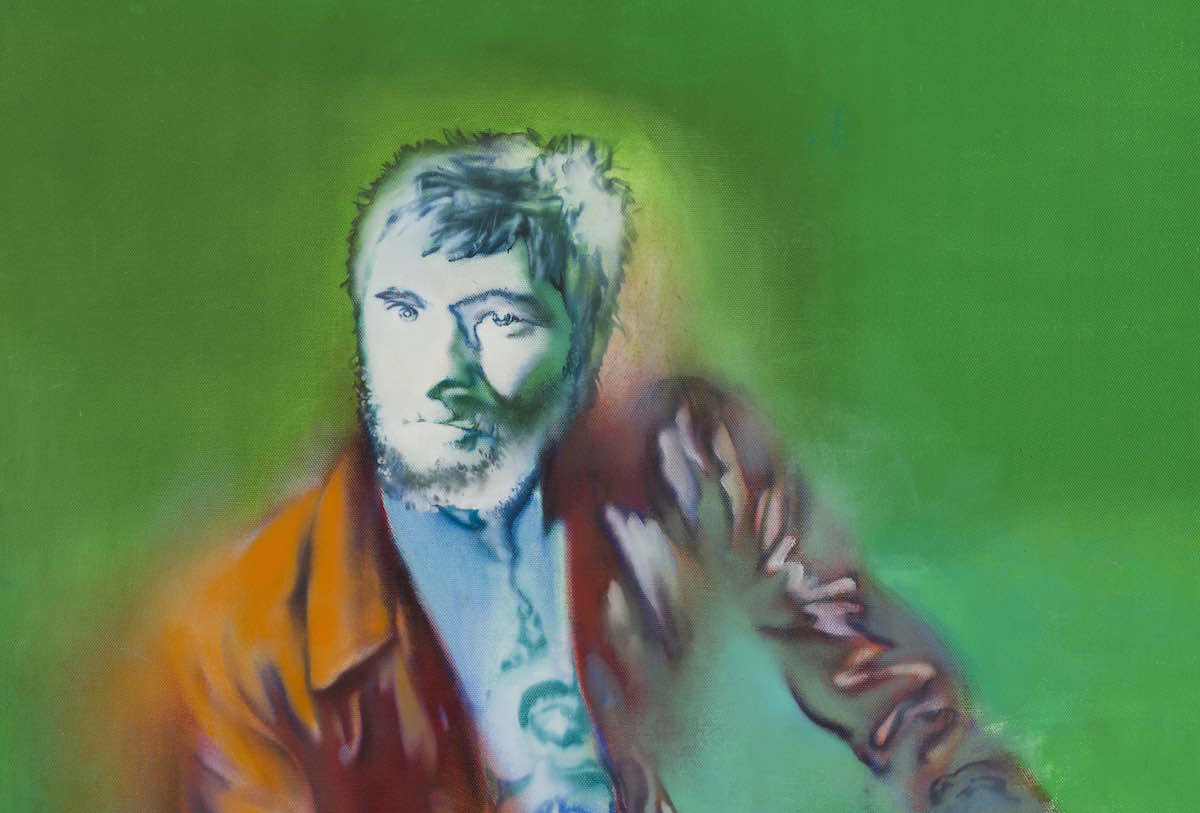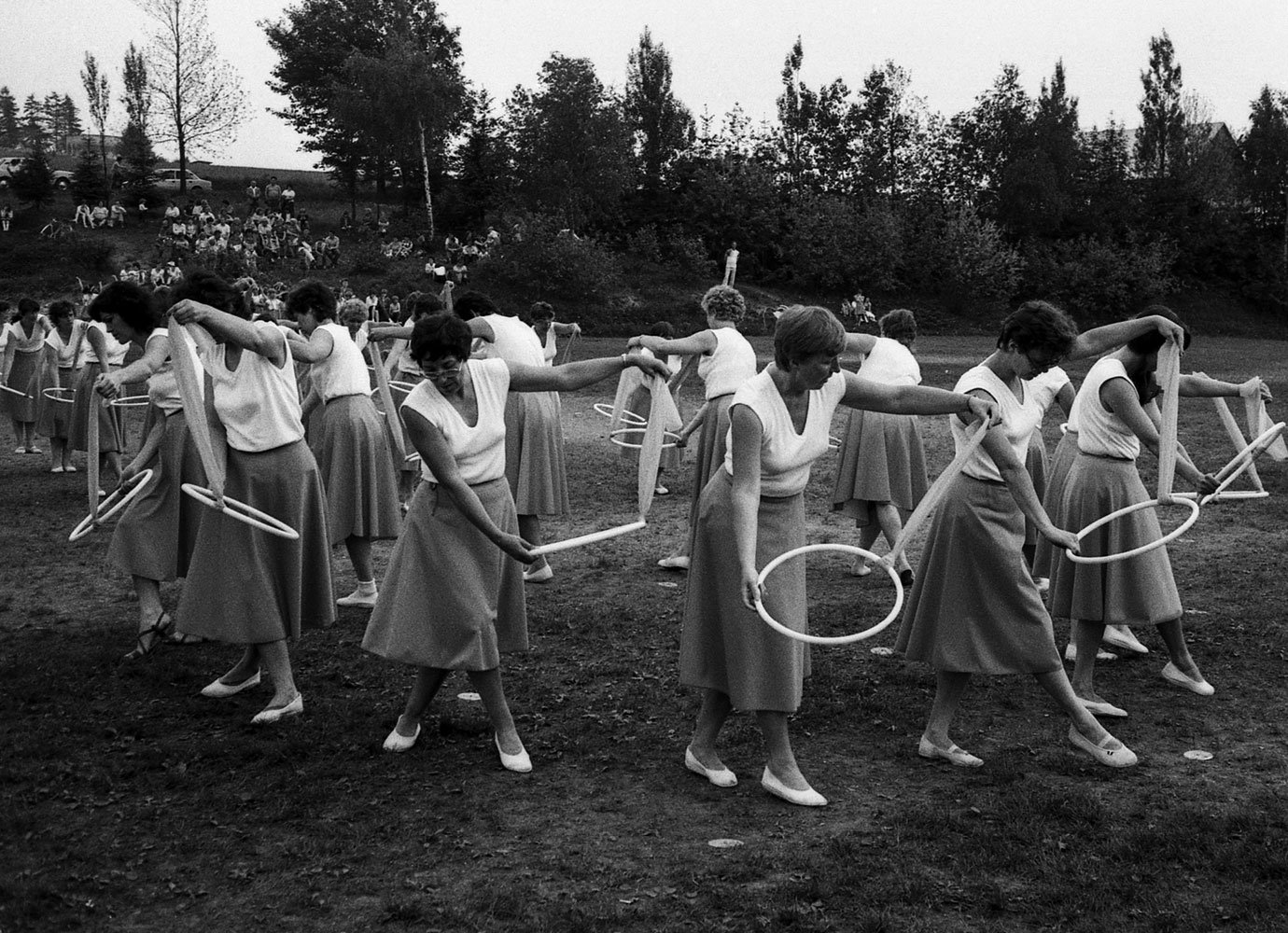In praise of socialist realism: the forgotten artworks that revolutionised the image of the Eastern Bloc
On a summer evening in 1952, two young boys and a woman play badminton in a Prague suburb. Above them, an enormous black sun appears to descend on the town. In this image by Czech photographer Tibor Honty, the dual presence of carefree fun and menacing darkness (an optical illusion created by the shadow of a gas station) captures the ambivalent mood that accompanied the communist transformation of Eastern Europe.
“Cold Revolution: Central and Eastern European Societies in Times of Socialist Realism, 1948-1959,” an exhibition at Warsaw’s Zachęta Gallery, examines postwar Poland, Czechoslovakia, East Germany, Hungary, Romania, and Bulgaria through painting, photography, film, and design. While socialist art is often stereotyped as “visually poor,” curator Jérôme Bazin said, the show explores its aesthetic and emotional range. He and co-curator Joanna Kordjak overlooked major prizewinners in favour of lesser-known works from regional museums, which tended to be more diverse in their depictions of everyday life.
After the Second World War, communists in Soviet-occupied countries built multi-party coalitions before gradually eliminating their competitors (an effort assisted by their control of the police). By 1948, the consolidation of a single-party socialist Eastern Europe was complete. Diverse territories were united by the same political system, industrialisation program, and aesthetic doctrine, which tasked writers and artists with representing the radiant new world. They faced a formidable challenge: much of Warsaw and Budapest still lay in ruins, and food shortages and rationing continued into the 50s, alongside political repression.
While significant variations persisted among countries, especially after Stalin’s death, the exhibition focuses on the shared changes experienced by the masses. The new governments held onto power through violence and coercion, but they also won the support of millions with transformative social programmes. Populations gained health and accident insurance, employment security, and access to free education at all levels. Hierarchies turned upside down as workers and peasants moved to rapidly expanding cities; took places at cafes, theatres, and universities; and embarked on careers far beyond the reach of their parents. Many intellectuals willingly participated in documenting changes that they saw as historically inevitable.
Image: Tibor Honty
Images of workers showcased their pride and finesse. In black-and-white portraits of labour leaders at the Nowa Huta steelworks, the heroes of the new ruling class wear crisp suits and ties. Imre Soós, an actor from a poor peasant family, became a heartthrob in Hungarian cinema by playing dashing proletarians who excel at everything they do. In the 1952 comedy Try and Win, he attempts to impress his love interest by playing sports and ends up motivating other workers to become athletes. “How beautiful is the baton!” he exclaims. “How beautiful is the world!” she replies.
Romantic belief in creating a perfect future was combined with faith in rational planning to meet the challenges of modern life. In Erich Gerlach’s Vocational Training (1949), workers study carefully to master the tools that will build socialism. Czech industrial designer Zdeněk Kovář, one of the founders of the School of Applied Arts in Zlín, developed curved grips and handlebars with their safety and comfort in mind.
In valorising a class that was presumed to be monolithic, artists also attempted to navigate the persistence of difference. A 1955 film by Władysław Ślesicki about the relocation of Roma to urban settlements shows their lives as a seamless blend of old and new. “Here in the open air it’s almost like in a forest camp, in a caravan,” a young man marvels as he sees a group of people eating outdoors. Pictures of colliding worlds could be highly ambiguous. Karol Kallay’s photograph “Sports Festival” portrays a woman in a headscarf (likely a peasant) watching a Stalinist parade. She is shown from behind, with her face obscured. It’s unclear what she thinks of the spectacle below and whether she belongs to the collective or stands in opposition to it.
Image: Spartakiada by Karol Kallay
Women were entering the workforce in record numbers, as seen in photographs that show female labourers operating power looms and clearing rubble off the streets. But their advancement produced resentment among male managers, who often relegated them to inferior positions. This tension between emancipation and subjugation is visualised in Kálmán Csabai’s 1953 painting “Study Circle,” in which a man stands authoritatively over a woman seated at a desk with a ruler and points out what she should do.
Socialist realism has typically been seen as “strictly propaganda, a way of thinking and doing art that was imposed on artists who acted against themselves and their own political ideas,” said Magda Szcześniak, assistant professor in the film and visual culture section of the University of Warsaw’s Institute for Polish Culture. A recent wave of historical, cultural, and anthropological research has challenged the traditional narrative of top-down terror. Szcześniak is currently writing a book about representations of social mobility in Polish culture between 1944 and 1981. It is inspired in part by the story of her grandparents, who received free education and made an “immense leap” into the middle class. She said that diaries from the postwar era reveal “fear and exhaustion”, as well as “excitement, openness, potential.”
Contemporary artists are also starting to rediscover the collective emotions aroused by the construction of socialism. “The Thousand-Year Plan,” a video installation by Agnieszka Polska at Warsaw’s Museum of Modern Art, is inspired by the electrification of the countryside after the Second World War. Polska evokes the utopian promise of modernisation in a dreamy tone that the show’s curator calls “magical socialist realism.” “When every road is lit at night, no one will be afraid again,” one activist tells another as golden electrical currents flit across their faces.
Image: Ladislav Guderna
Szczęśniak said that there is an “ever-growing rift” in Poland between the left-leaning academics, artists, and curators who are revising dominant attitudes and the far-right Law and Justice party, which has mobilized a “strong anti-Communist discourse” in its project to create a homogenous national identity. On 1 April, 2016, the ruling party passed a “de-communisation” bill that changed hundreds of street names and removed dozens of monuments across the country. While some of them were dedicated to Red Army soldiers who fought in the Second World War, others honored socialist movements that long preceded the Soviet takeover. Among the fallen were plaques marking the birthplaces of socialist philosopher and organiser Rosa Luxemburg (who was murdered in 1919 by the Freikorps) and avant-garde filmmaker Dziga Vertov.
Law and Justice has given galleries relatively free reign to reinterpret the past while also placing pressure on curators and directors to conform to their tastes. In 2019, Minister of Culture Piotr Gliński dismissed the head of Warsaw’s Centre for Contemporary Art in Ujazdowski Castle and installed a new director with an overtly pro-government, right-wing agenda. In June, Zachęta’s director Hanna Wróblewska was notified that her contract had not been renewed. The Ministry has yet to name a replacement.
Amidst rising criticism of the post-socialist transition, the gap between elite reassessments of the Polish People’s Republic and the broader discourse may narrow. Law and Justice condemns “communism” for its crimes and repressions, while selectively adopting elements of its social welfare programmes, which have proven highly popular among provincial and working-class voters. According to Szczęśniak, reclaiming positive aspects of the socialist fight against inequality is crucial to challenging its rule: “The future of the left is at stake.”
Image: Stefan Arczynski Wiec, Hali Ludowej, 1954


